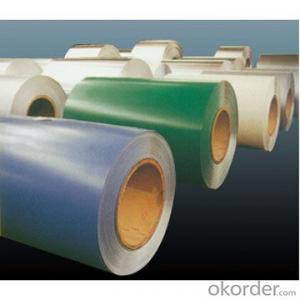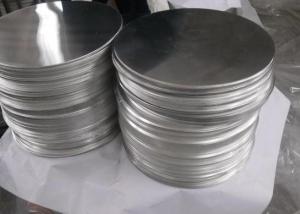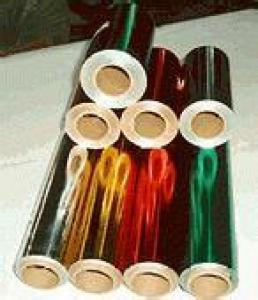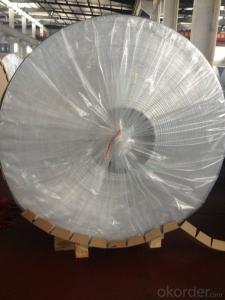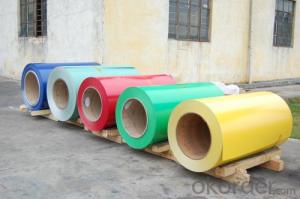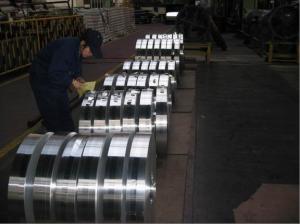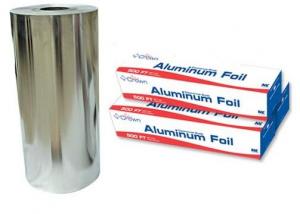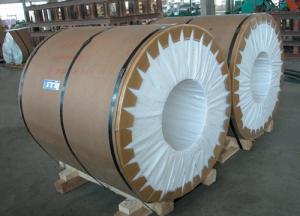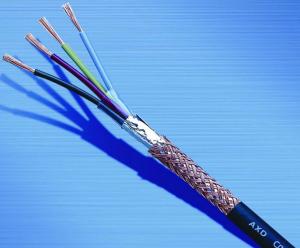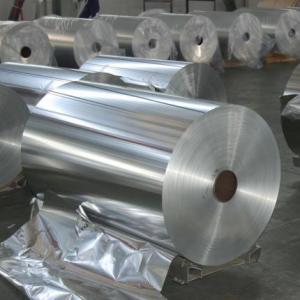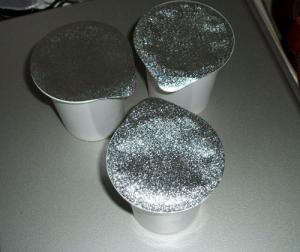Pre painted aluminum coil
- Loading Port:
- China Main Port
- Payment Terms:
- TT OR LC
- Min Order Qty:
- -
- Supply Capability:
- -
OKorder Service Pledge
OKorder Financial Service
You Might Also Like
We provide a full range of precision aluminum strip for almost any application. We produce aluminum strip in a wide variety of alloys, including clad composites. Our aluminum strip can be produced in standard dimensions or custom made to your special requirements. We produce both imperial and metric units. We manufacture in compliance with the main international specifications, and tighter tolerances or custom tempers are available upon request. We offer various surface conditions, custom finishes (painting, anodizing, embossing), special processing, and multiple packaging options to meet our customer's unique requirements. The following is a summary of our capabilities.
Manufactured in compliance with the main international specifications and standards, including: Aluminum Association, ASTM, EN, and DIN.
We can also manufacture in compliance with other international standards including:ASME, SAE, AMS, AWS, FED, MIL, QQ, ISO, BS, AFNOR, JIS and GOST.
Manufactured in compliance with the main international specifications and standards.
Tighter tolerances are available upon request.
Aluminium (or aluminum; see spelling differences) is a chemical element in the boron group with symbol Al and atomic number 13. It is a silvery white, soft, ductile metal. Aluminium is the third most abundant element (after oxygen and silicon), and the most abundant metal in the Earth's crust. It makes up about 8% by weight of the Earth's solid surface. Aluminium metal is so chemically reactive that native specimens are rare and limited to extreme reducing environments. Instead, it is found combined in over 270 different minerals.The chief ore of aluminium is bauxite.
Aluminium is remarkable for the metal's low density and for its ability to resist corrosion due to the phenomenon of passivation. Structural components made from aluminium and its alloys are vital to the aerospace industry and are important in other areas of transportation and structural materials. The most useful compounds of aluminium, at least on a weight basis, are the oxides and sulfates.
Despite its prevalence in the environment, no known form of life uses aluminium salts metabolically. In keeping with its pervasiveness, aluminium is well tolerated by plants and animals. Owing to their prevalence, potential beneficial (or otherwise) biological roles of aluminium compounds are of continuing interest.
Aluminium alloys with a wide range of properties are used in engineering structures. Alloy systems are classified by a number system (ANSI) or by names indicating their main alloying constituents (DIN and ISO).
The strength and durability of aluminium alloys vary widely, not only as a result of the components of the specific alloy, but also as a result of heat treatments and manufacturing processes. A lack of knowledge of these aspects has from time to time led to improperly designed structures and gained aluminium a bad reputation.
One important structural limitation of aluminium alloys is their fatigue strength. Unlike steels, aluminium alloys have no well-defined fatigue limit, meaning that fatigue failure eventually occurs, under even very small cyclic loadings. This implies that engineers must assess these loads and design for a fixed life rather than an infinite life.
Another important property of aluminium alloys is their sensitivity to heat. Workshop procedures involving heating are complicated by the fact that aluminium, unlike steel, melts without first glowing red. Forming operations where a blow torch is used therefore require some expertise, since no visual signs reveal how close the material is to melting. Aluminium alloys, like all structural alloys, also are subject to internal stresses following heating operations such as welding and casting. The problem with aluminium alloys in this regard is their low melting point, which make them more susceptible to distortions from thermally induced stress relief. Controlled stress relief can be done during manufacturing by heat-treating the parts in an oven, followed by gradual cooling—in effect annealing the stresses.
The low melting point of aluminium alloys has not precluded their use in rocketry; even for use in constructing combustion chambers where gases can reach 3500 K. The Agena upper stage engine used a regeneratively cooled aluminium design for some parts of the nozzle, including the thermally critical throat region.
Another alloy of some value is aluminium bronze (Cu-Al alloy).
Aluminium foil acts as a total barrier to light and oxygen (which cause fats to oxidise or become rancid), odours and flavours, moistness, and germs, it is used broadly in food and pharmaceutical packaging. The purpose of aluminium is to make long-life packs (aseptic processing|aseptic packaging) for drinks and dairy goods, which allows storing without refrigeration. Aluminium foil containers and trays are used to bake pies and to pack takeaway meals, ready snacks and long life pet foods.
Aluminium foil is widely sold into the consumer market, often in rolls of 500 mm (20 in) width and several metres in length.It is used for wrapping food in order to preserve it, for example, when storing leftover food in a refrigerator (where it serves the additional purpose of preventing odour exchange), when taking sandwiches on a journey, or when selling some kinds of take-away or fast food. Tex-Mex restaurants in the United States, for example, typically provide take-away burritos wrapped in aluminium foil.
Aluminium foils thicker than 25 μm (1 mil) are impermeable to oxygen and water. Foils thinner than this become slightly permeable due to minute pinholes caused by the production process.
- Q:Is it aluminum good or PVC plastic good for the refrigerator inner container?
- The aluminum is good because it can preserve the temperature!
- Q:120 and 150 hidden frame glass curtain wall aluminum profile per square meter dosage, there may be curtain wall quotation cost analysis table
- Aluminum curtain wall is about 8-10kg/ square meters.I don't have any formAt present, the price of aluminum profile is 20-30 yuan /kg (anodizing, powder spraying, fluorocarbon spraying and other surface treatment)A window sash is glass, aluminum, metal fittings, glue, these things, aluminum, glass is accounted for the bulk
- Q:Domestic aluminium foil for food use is 15 x 10^-6 m thickIn my local supermarket, a roll of foil measuring 10 m by 0.3 costs ?1.65.Calculate the cost per tonne of the foil as purchased in the supermarket.Account for any difference between this cost and the raw material cost of ? 1000 per tonne.the density of aluminium is 2700 kg m^3
- A typical rool of foil has a mass given by the volume of aluminum times the desnity of aluminumThe roll has a volume: V 10 m x 0.3 m x 15 x10^-6 m 45 x 10^-6 m^2 The mass is M 2700 kg/m^-3 45 x 10^-6 m^3 0.1215 kg If there are 2000 kg/tonne then you need: N 2000 kg/0.1215 kg 16,461 rolls of foil and if each roll cost 1.65 pounds (sorry - no key for that), the total cost is C 16,4611.65 27,160 pounds Now there is a 26,160 pound price difference between raw material and the foilThe difference is due to the cost of smelting the raw material into aluminum metal, procesing the metal to make the foil (including rolling, cutting, etc), packaging, shipping, profit for the smelter, the metal processor, etc, supermarket costs (labor, overhead and so on), and store profit.
- Q:What are the mechanical properties of aluminum sheets?
- Aluminum sheets possess several mechanical properties, including high strength-to-weight ratio, excellent corrosion resistance, good formability, and high thermal and electrical conductivity. They are also non-magnetic and non-toxic, making them suitable for various applications in industries such as aerospace, automotive, construction, and packaging.
- Q:I have a Brain due for a project tomorrow, as you can probably tell I'm a procrastinator.But I would like to make the brain out of jello but it's to late to get an actual brain mold.HELP ME!!!!!!!.
- Make a mold out of aluminum foil in a bowl to keep it in shape'.
- Q:I have to separate plastic, aluminum, metal, and paper in two four pileswe know what each item that we are required to separate; 3 empty Campbell soup cans (305 grams sized can), 3 empty aluminum pop cans (355 mL size), 3 empty water bottles (591 mL), 2 square of corrugated cardboard cut into 12 cm x 20 cm squares, 2 full pages of newspaper folded into 12 cm x12 cm squares.it can be hand cranked or small motor poweredThe hard part is we have to rebuild it in 20 minutes at the site and it can only weight 30 pounds, length of 150 cm and width of 60 cmhelp me please.
- I suppose it has value as an academic exercise, but a typical waste stream has 4000 variables instead of 4 or 6I suppose you can adapt web cams to look at the belt and a computer program to compare that to images of the desired items stored in the computer memoryMultiple views will have to be stored as several orientations are possible for each itemMy guess is lots of selection errors if there are thousands of other items mixed with the 6 desired items in high densityYou will need at least one reduced scale Canada arm to grab the items selected as they pass at perhaps 0.1 meter per secondSounds expensive and the development time is longer than you likely haveAvailable miniature Canada arms will be incredibly expensiveSelecting by image has the advantage that even half full items will be selected along with the emptiesSquare newspaper will be rare in most waste streams as will 12 by 20 cm pieces of corrugated cardboardWind gusts may unfold the newspaper, and push other items off the conveyor beltNeil
- Q:A)aluminumB)plasticsC)glassD)paper
- Paper as in cardboard.
- Q:What are the different types of extrusion processes used for aluminum profiles?
- The manufacturing of aluminum profiles utilizes various extrusion processes, each with its own advantages and limitations. These processes are widely employed in the aluminum industry to produce a diverse range of shapes and sizes for different applications. 1. The most commonly used extrusion process for aluminum profiles is direct extrusion. It involves the use of a heated aluminum billet that is forced through a die using either a ram or screw. This results in a continuous profile with a consistent cross-section. 2. Indirect extrusion, also referred to as backward extrusion, is another method. It entails the use of a heated billet that is pushed through a stationary die using a hollow ram. The ram exerts pressure on the back of the billet, causing it to flow through the die and form the desired profile. 3. Hydrostatic extrusion is a specialized process utilized for extruding aluminum profiles with intricate shapes and thin walls. The billet is placed in a sealed container filled with a pressurized fluid, which aids in controlling the material flow and reducing the risk of defects. 4. Impact extrusion is employed to create hollow profiles. It involves striking a slug of aluminum with a punch while it is inside a die. The impact causes the material to flow around the punch and take the shape of the die, resulting in a seamless profile with exceptional dimensional accuracy. 5. Cold extrusion is a room temperature process used to manufacture aluminum profiles. A billet is placed in a die, and pressure is applied to force the material through the die. This yields a profile with enhanced strength and surface finish. 6. Hot extrusion is similar to direct extrusion, but the billet is heated to a higher temperature before being forced through the die. The elevated temperature reduces the material's strength and increases its ductility, enabling the creation of more complex profiles. The selection of an extrusion process depends on various factors, including the desired profile shape, size, complexity, and specific application requirements. Each process offers its own set of benefits and limitations.
- Q:HELP I remember the epiode but I can't find the recipe for Alton Brown's pork tenderloinsAnyone? FOODNETWORK DID NOT HAVE IT!! HELP please!!! (thx in advance)
- Alton Brown Pork Tenderloin Recipe
- Q:Alternative to a Brass Fastener?
- get a tin or aluminum can ,like the kind beans or soup or tuna come inthen cut a strip of metal about 1/4 wide and 4 longThen bend it into a T shape so it looks like your picture ,but the top will be flat and not a rounded shapeyou can cut the alum with some scissors
1. Manufacturer Overview |
|
|---|---|
| Location | |
| Year Established | |
| Annual Output Value | |
| Main Markets | |
| Company Certifications | |
2. Manufacturer Certificates |
|
|---|---|
| a) Certification Name | |
| Range | |
| Reference | |
| Validity Period | |
3. Manufacturer Capability |
|
|---|---|
| a)Trade Capacity | |
| Nearest Port | |
| Export Percentage | |
| No.of Employees in Trade Department | |
| Language Spoken: | |
| b)Factory Information | |
| Factory Size: | |
| No. of Production Lines | |
| Contract Manufacturing | |
| Product Price Range | |
Send your message to us
Pre painted aluminum coil
- Loading Port:
- China Main Port
- Payment Terms:
- TT OR LC
- Min Order Qty:
- -
- Supply Capability:
- -
OKorder Service Pledge
OKorder Financial Service
Similar products
New products
Hot products
Hot Searches
Related keywords
